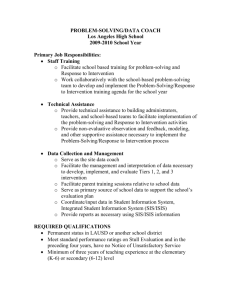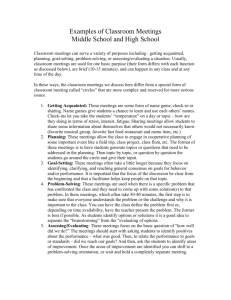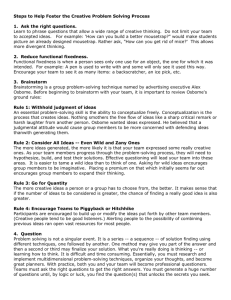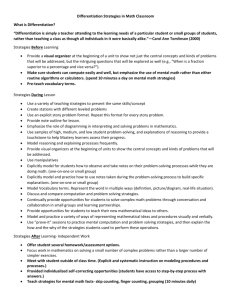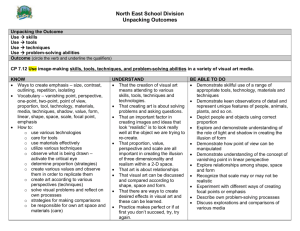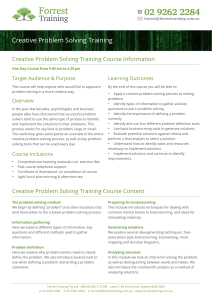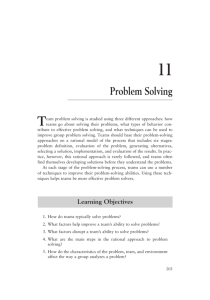The LIFESKILL of Problem Solving - The Center for Effective Learning
advertisement
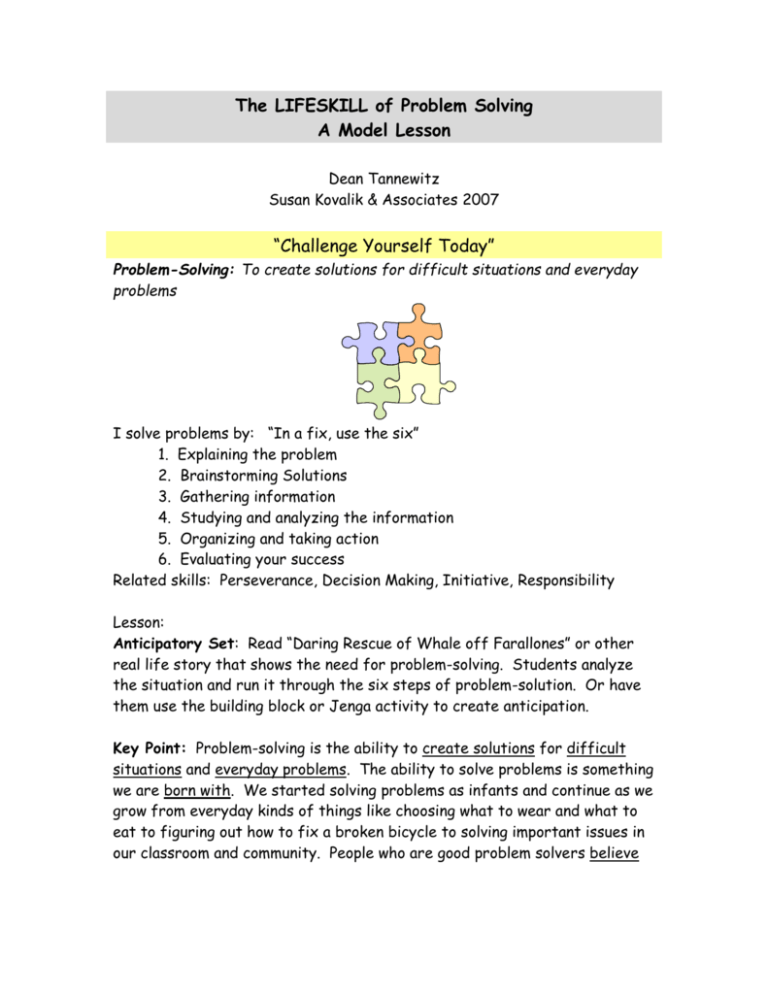
The LIFESKILL of Problem Solving A Model Lesson Dean Tannewitz Susan Kovalik & Associates 2007 “Challenge Yourself Today” Problem-Solving: To create solutions for difficult situations and everyday problems I solve problems by: “In a fix, use the six” 1. Explaining the problem 2. Brainstorming Solutions 3. Gathering information 4. Studying and analyzing the information 5. Organizing and taking action 6. Evaluating your success Related skills: Perseverance, Decision Making, Initiative, Responsibility Lesson: Anticipatory Set: Read “Daring Rescue of Whale off Farallones” or other real life story that shows the need for problem-solving. Students analyze the situation and run it through the six steps of problem-solution. Or have them use the building block or Jenga activity to create anticipation. Key Point: Problem-solving is the ability to create solutions for difficult situations and everyday problems. The ability to solve problems is something we are born with. We started solving problems as infants and continue as we grow from everyday kinds of things like choosing what to wear and what to eat to figuring out how to fix a broken bicycle to solving important issues in our classroom and community. People who are good problem solvers believe in themselves and rarely give up. Most people who are good problem solvers use a series of steps to address any problem. Guided Practice: 1. Students body-map the attributes of Problem-solving through the steps 2. Listen to the LS Song about Problem-Solving 3. Make a list of all the problems you’ve solved in the past 24 hours (since morning for K-2) 4. Paper plate problem pass….Write your name on a paper plate. On the back, write a problem you are having. Toss the paper plates to others for suggestions to your problem. Once five people have written their suggestions, go back to your seat and read the solutions. Choose the solution you like best and illustrate how you will use it. . In a Town Hall Meeting or Class Meeting setting, share one of the following: a. The problem you recorded and the solution you like the best b. Just the solution you preferred c. Pass Inquiries: K-2: With a partner, build the tallest tower you can out of building blocks. After you’re finished, use the first four problem solving steps to talk about it before you build it again. Build it a second time to see how your problem solving strategies worked. 3-4: With a partner, analyze the safety of your playground by conducting the recommended safety measurements of equipment. See if your playground measures up. Recommend a solution to the school if it does not. 3-8: Untie “The Knot” activity or passing on a railroad tie or beam 5-8: Mountain Survival Activity: Complete the activity and analyze your process via the six steps 3-8: Play Jenga and analyze using the six steps Extended Problem-Solving: Decorate a Problem-solving box or bag for the classroom to bring to Town Hall Meetings. If students have a problem, they write about it and put it into the box to discuss and gather solutions at a Town Hall Meeting. Brainstorm five typical problems that students your age face every day, such as lost homework, tardiness, fights, being offered drugs/alcohol, finding money, losing a pet. With a partner, select three of the problems to dramatize, each with two different endings. Ask the class to vote for the best solution of the two you proposed. Read or watch the news for issues (Problems) facing your local community. Brainstorm ways your class or team can help address the issue. Create a plan and present it to the class. Take action. (K-2): Identify an issue or problem in the school and do the same things. Adapted from Tools for Citizenship and Life by Sue Pearson Scenarios to Consider “In a fix, work the six” “Problem-solvers use the six to make a difference in their own lives and the lives of others.” 1. You don’t know what to wear in the morning 2. You want a new bike, skateboard, i-pod, jacket, shoes but don’t have the money to buy them 3. You have a broken bike, skateboard or piece of jewelry 4. You’ve lost something important to you: a pet, a piece of jewelry, a favorite book 5. You want to do something different than what you’ve already agreed to 6. You have an argument with a friend and want to fix it 7. You want more independence at home 8. You routinely lose your temper over small things 9. You want to do something special like go to a game or dance but your parent(s) don’t want you to 10. You have friends who are making poor choices and want you to do the same 11. At school on the playground, other students won’t let you play in a game 12. You see others bullying someone and you don’t think its right In your community: 1. Homelessness 2. Poverty 3. Dogs and cats running loose 4. A dirty park where you’d like to play or hang out 5. No place to hang out or play 6. No way to get from one place to the next 7. People aren’t registered to vote in elections 8. No safe places to ride bikes 9. People don’t clean up after the messes their dogs make 10. Unsafe neighborhoods




